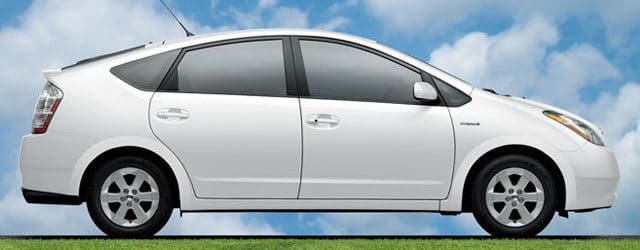World weather conditions are changing in an unpredictable way over last few decades. Large part of the reasons are damages that human civilization done to the nature and its natural balance. However, now there is no way for the human civilization to move on without their advance technology and machinery. Hence, live green came in to the picture having the objective of continue with the technological development with the minimum environmental impact.
Major environmental impact which led world weather condition to this state is ‘Carbon Emission’ Most of the developed countries emit scary amount of carbon per year, with their industrial machinery. Not just that, entire countries emit massive amount of carbon every day as a result of transportation based of fossil fuel. There were lots of global concepts came to picture to minimize these environmental impact, like ‘carbon trading’ but none succeeded since there were lesser support from world’s biggest carbon emitting countries.
Even though we don’t mind emitting carbon, fossil fuel are very limited and the regeneration process will take centuries. At the current state we are burning them in a rate which might be many 1000s times greater than their regeneration. So we are in a mission to save fossil fuel as well as the environment.
Hybrid car technology is an angel came to save the world environment and entire human civilization by minimizing carbon emission in transpiration mechanisms. The name hybrid came since those engines are using two types of energy sources. They were using in industry machinery, Ari crafts, naval vehicles, heavy transportation vehicles as well as domestic vehicles. The Hybrid Electric Vehicles (HEV) became popular with domestic vehicles and became an exponential trend in past few years.

Bit of History
The concept of hybrid vehicle was there in the academic world for so long. But, proposed mechanisms were too complex to implement and no good enough for domestic usage. When it comes to Hybrid Electric Vehicles, the major concern was its battery. It was too costly to replace and most of the cases not capable of holding enough power for decent long distance drive.
Technology continues to evolve for decades and as a result Japan produced world’s very first Hybrid Electric vehicle which was Toyota Prius back in 1997. Then Honda also came to the competition with their Civic in 1999. Those vehicles were having great fuel consumption as good as 50 MPG even in that time. However, there were performance issues as well as major issues with batteries.
Lots of vehicle manufactures came in to the competition, yet Toyota and Honda was the leading top sellers all the time. There was very advanced technologies introduced by Audi, BMW and Mercedes-Benz, but they didn’t go much in to pubic manly due to their high cost. Most of the above mentioned issues were resolved and in 2004 there was 200, 000 Hybrid car sales in USA and in 2010 it went up to 1, 800, 000 displaying its great success.
Types of Hybrid Engines
Parallel Hybrid Engines
In these engines both the internal combustion engine and Electric motor is connected to transmission. Vehicle may be using internal combustion engine or power of electric power to depending on driving condition. Sometimes it might use the both. It uses regenerative braking to transform kinetic energy back to electric energy. Further they are capable of generate power from internal combustion engine and store them in batteries. Most of the case those vehicles are having smaller motor and batteries since they are not suppose to drive only with motor. They perform good in highways as well as city drives in traffic.
Series Hybrid Engine
They uses internal combustion engine only to generate power and store them in a battery. The drive will be only powered by batteries and deliver maximum comfortable smooth drive. They have smaller internal combustion engine and bigger battery and motor, you can guess why. They also support regenerative braking, so do well in city driving in traffic. However, they come with greater market price due to their bigger motor and battery.
Power Split Hybrid Engine
This is the most popular and most balanced type of hybrid engine. The magic is they can drive with motor and internal combustion engine, either, both or proportionality like in parallel hybrid. Yet, they can generate power from internal combustion engine and drive with only motor as well, like Series hybrid. Hence, they can select the most efficient mechanism depending on driving conditions. As an example, they can switch to parallel mode in high speeds since they are good with high speeds. And they can go to series mode, in low speed as well. Plus, they have regenerative breaks like in other models.
Obviously, this must be having average, size internal combustion engine as well as a battery and motor. They come with average price, higher than pure parallel engines, yet much lower than pure series engines. The top selling Hybrid car in the world, which is Toyota Prius is powered with a power split Hybrid engine, and now you can see why it became the top selling car.
Engine Components
Internal Combustion Engine
This is traditional type of internal combustion engine which transforms fossil fuel in to kinetic energy using pistons. They empowered our autos for century and still there in hybrid engines as well. However, in this application they will be using in very optimum way, burning minimum amount of fossil fuel. They are used to generate electric power and drive in high speed.
Electric Motor
Electric motor power mainly in low speed drives and yet supports the internal combustion engine in acceleration in high speed drives. It converts electric energy in batteries to kinetic energy, then transfer them to vehicle through its transmission. Some of the Hybrid cars provide a ‘Zero Emission Mode’ which driver can select only the electric motor to power up the drive. This might be useful to drive your car in to ‘No Carbon Emission Zones’.
Generator
This is one of the magical concepts in hybrid engines. Generally, when braking, the kinetic energy in vehicle will be taken out as thermal energy and potential energy in suspension. But, hybrid engines can’t just waste energy like that. It uses this generator to convert the kinetic energy back to electric energy when braking and store them back on batteries. This called as ‘Regenerative Braking’.
Fuel Tank and Batteries
As usual, same as in traditional cars fuel tank will provide required fuel type to internal combustion engine. The battery pack will be there to power up electric motor whenever it required. Additionally, internal combustion engine may be recharging batteries. Plus, regenerative braking also will be re charging batteries when the vehicle brakes.
Transmission
The transmission has to be very special and somewhat complex since it has to handle two source of power. Basically it uses general transmission mechanism with clutch and all. Yet, it will be using variable transmission ratio to make it more efficient and cope up with different driving conditions, by selecting optimum source of energy for the situation. However, in the Parallel and series hybrid vehicles, transmission will be much similar to traditional transmission, yet in Power split hybrid must have much more complex mechanism, in order to select the optimum power source as well as power ratio.
Solar Panels
This is anotehr magical concepts in Hybrid Electric vehicles. Most of the time vehicle will be driving and parking in broad day light and why not convert it in to electric energy and store in batteries. In order to do that some special version of HEVs are having Solar panels, mostly in sun roof and rear windscreen. They are suppose to pump more electric power to batteries which will definitely lead to less carbon fuel burning,
Continue to Part 2…
Tags: #Hybrid #Vehicles
